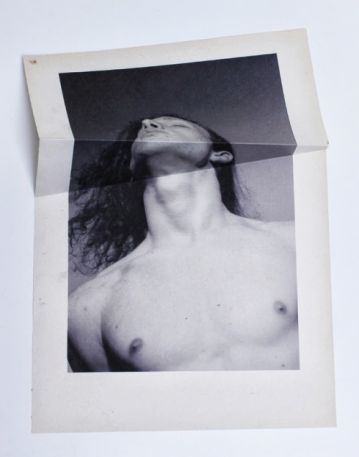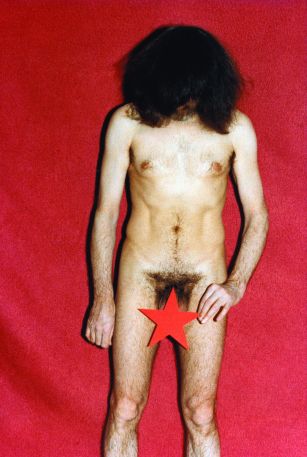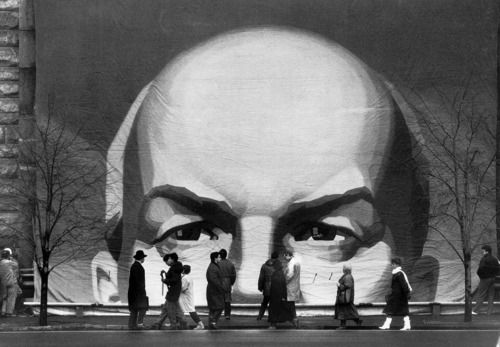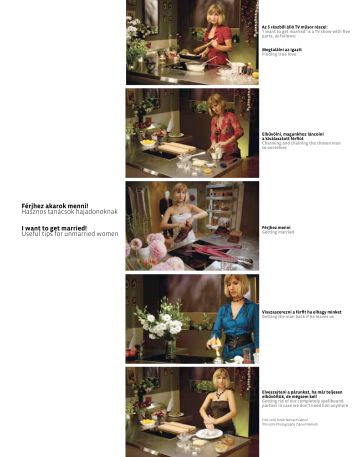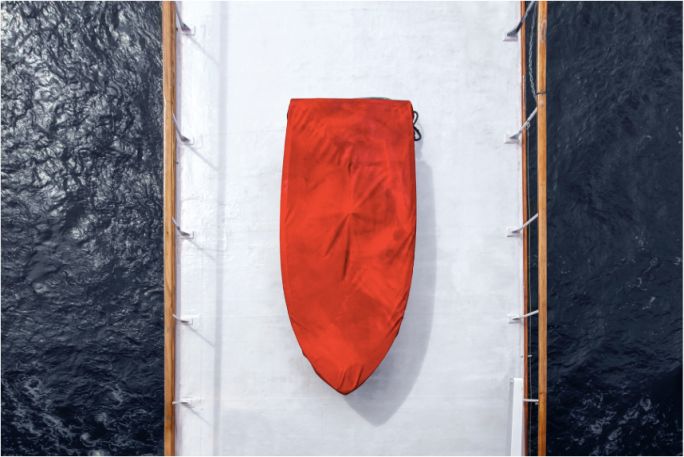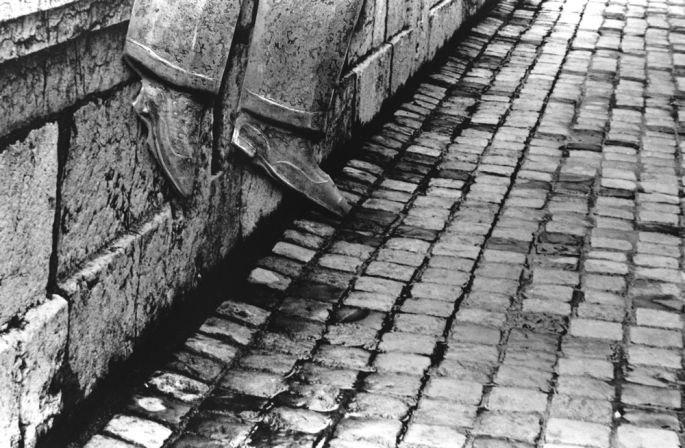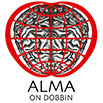
ECHOES: City, Society, Conflict & Self in Hungarian Photography
Alma Gallery, New York
Various Artists
June 24, 2016 throughJuly 30, 2016
András Bánkuti / Máté Bartha / Brassaï / Robert Capa / Ákos Czigány / Luca Gõbölyös / Karina Horitz / André Kertész / Imre Kinszki / Adél Koleszár / Gábor Arion Kudász / György Lõrinczy / László Moholy-Nagy / Mari Mahr / Zsuzsanna Marinka / Balázs Máté / Dóra Maurer / Mátyás Misetics / Szilvia Mucsy / Martin Munkácsi / Tomas Opitz / Sándor Pinczehelyi / Marcell Piti / Sylvia Plachy / Milán Rácmolnár / Anikó Robitz / Gyula Sopronyi/ Lenke Szilágyi / Éva Szombat / Endre Tót / János Vetõ
László Moholy-Nagy deployed light and his camera to express a “new vision” that embraced modern art and technology within a utopian social network. Influenced by Dadaist collage and Constructivist raking angles, he structured surface compositions that competed with the spatial depth of his scenes. Some of his most effective images—such as his bird’s-eye view from atop Berlin’s radio tower—reflect modern subjectivity and visuality through a novel perspective on the city. Several images in this exhibition similarly reflect on society and the individual through the city environment.
André Kertész’s first known photograph, “Sleeping Boy, Budapest” (1912), already reflects a mastery of modern composition. This he applied throughout his career to his wide range of subjects, including city scenes, his famous distorted nudes, and even to the war photography and action photography for which his compatriots Robert Capa and Martin Munkácsi became famous. Their photojournalism molded modern ways of seeing and storytelling—and echoes recurrently in photographic practice. Richard Avedon described the world of fashion as peopled by Munkácsi’s heirs; Henri Cartier-Bresson cited Munkácsi’s image of African boys running into the water as the only photograph that ever influenced him.
Past masters directly or indirectly inspired some of the contemporary artists in this exhibition, while others tackle enduring themes in original ways. Anikó Robitz’s architectural close-ups render her surfaces far more abstract than Moholy-Nagy’s. Ákos Czigány’s worm’s-eye views upward from apartment-block courtyards recall works by Imre Kinszki and Moholy. Gyula Sopronyi’s series of barges shot from above recall related images by Moholy, Brassaï, and Kinszki, but they also constitute a conceptual project.
Milán Rácmolnár restaged Capa’s iconic D-Day images with actors, and then further translated these scenes via digital filters—even music programs—to produce images that are both homages to iconic Capa photos and contemporary reminders of the constancy of conflict in human society. They also reflect how digital techniques today can manipulate reportage. Conflict situations may not be what they seem.
Neo-avant-garde and new-wave artists in Soviet-era Hungary strained against censorship with wit, sarcasm, and persistence, often using their own bodies to pose contradictions. Endre Tót shields his nudity behind a red star and effaces himself with a mop of hair; in some versions of his self-portrait, he stamped his torso with the proclamation, “Communism Made Me Glad.” János Vető’s self-portrait shows eyes simultaneously open wide and closed shut. Lenke Szilágyi portrayed herself with hair on her chest, and she undermined quotidian existence by mailing a remarkable photograph to a few fortunate friends each day. Every day, Dóra Maurer captured the impression her body left behind on her bed, reflecting her self through the traces her body left behind during the passage of time.
Capturing the eclipse of the Soviet era are works by András Bánkuti, Mari Mahr, and Sylvia Plachy, while Zsuzsanna Marinka’s recent portraits suggest contemporary tensions and duplicity in Hungarian society. In contrast, Éva Szombat’s installation turns toward lightness of being through her “practitioners” of “happiness.”
______
https://news.artnet.com/exhibitions/12-must-see-summer-photography-shows-new-york-523850
This exhibition was preceded by “Impact: Abstraction and Experiment in Hungarian Photography.” Both exhibitions were curated by Dr. Gary van Wyk, with consulting curators at the principal lending institutions, Dr. Péter Baki, Director of the Hungarian Museum of Photography, Asst. Prof. Gábor Arion Kudáz of the Moholy-Nagy University (MOME), Dr. Márton Orosz of the Kepes Institute in Eger, and Dr. Luca Göbölyös, Szilvi Mucsy, Carole Naggar, Tomaz Opitz, and Dr Sándor Szilágyi.
______
The exhibitions were co-presented by AlmaOnDobbin, the Consulate General of Hungary, Balassi Insitute, and Art Market Budapest, as part of Modernity X Hungary—A Festival of Hungarian Modernism in New York, sponsored by the Ministry of Foreign Affairs and Trade, Hungary.
-
Nándor Bárány (1899-1977) Bárány may be regarded as one of Hungary’s first exponents of the New Objectivity. His primary aim was to manifest abstract ideas in photographic form, and he was a keen experimenter. His contribution was internationally recognized, and he received American Photography’s Honourable Mention Award. A leading optician, he was involved in the creation of a soft-lens system in 1932, which was sold under the name Hafár by the company HAFA, and was the first person in Hungary to produce the “T” coating reducing reflections. He was the author of many specialist works, including the six-volume Optikai műszerek elmélete és gyakorlata [Theory and Practice of Optical Instruments] (1947–1956), which is a standard work in the fields of optics and photography. Qualified as a mechanical engineer, he was a university lecturer and an associate member of the Hungarian Academy of Sciences. Between 1931 and 1939, he received eighteen awards at foreign exhibitions. In 1951, he was awarded the Kossuth Prize in recognition of his work.
Máté Bartha (b.1987) is a multimedia artist based in Budapest. He graduated from the Moholy-Nagy University of Art and Design in 2011. He received the national Pécsi József Scolarship in 2013, and was an invited participant of PLAT(T)FORM 2014, at Fotomuseum Winterthur, Switzerland. He has exhibited in Budapest, Paris, Bucharest, Istanbul, Ulm, and Cologne. His work explores a boundary between documentary and staged photography. In 2014, Bartha published his first photo-book, Common Nature, which is an allegorical essay on modern metropolitan street life. In his other personal and commercial projects, Bartha often collaborates with other Hungarian artists and videographers. He has been a member of the Hungarian Studio of Young Photographers (FFS) since 2007, and the Studio of Young Artists' Association (FKSE) since 2013. He also directs short documentaries on social issues for Hungarian online news portals.
Ákos Czigány (b.1972) is prominent among contemporary photographers in Hungary. In 2010 he won the renowned Lucien Hervé and Rodolf Hervé prize with his “Skies—homage á Hiroshi Sugimoto” series, and also the third prize in the International Photography Awards. In 2011, he received both second prize and the special prize at the Prague-based Leica Gallery’s FRAME011 international photography contest. The precise geometrical forms and compositions of Czigány’s photographs reflect the Bauhaus and Hungarian Constructivist traditions, and concentrate on light, negative space, and the built environment. He has featured in several recent exhibitions in Hungary (Hungarian National Gallery, Mai Manó—The Hungarian House of Photography, and King St. Stephen Museum in Székesfehérvár) and abroad (Museum im Kulturspeicher, Würzburg; Galerie Braubach five, Frankfurt; Galleria Parmeggiani - Musei Civici di Reggio Emilia, Italy). His work is in several private and public collections, including the Hungarian Museum of Photography in Kecskemét, the King St. Stephen Museum, Székesfehérvár, and Deutsches Architekturmuseum, Frankfurt.
Luca Gőbölyös (b.1969) received her MA (1994), DLA (2005), and doctorate (2009) in photography at the Hungarian Academy of Craft and Design in Budapest, completing her habilitation thesis in 2016. She also completed her MFA in photography at the University of Brighton (1997-1998) as a British Council Award recipient. She has won and been shortlisted for numerous national and international awards. Her work has been showcased in USA, France, Germany, Great Britain, Austria, Estonia, Romania, Finland, Slovenia, Poland, India, and Asia, at such venues as Ludwig Museum, Budapest; Biennial Istanbul; National Gallery of Modern Art, New Delhi; Vienna Art Fair; and Walter Bischoff Galerie, Berlin. Gőbölyös’s work is held in several public and private collections. She currently lives and works in Budapest and Cologne, and heads the photography program in the Institute of Media Arts at the Budapest College of Communication, Business & Arts.
Karina Horitz (b. 1969-) studied Fine Art at Liverpool John Moores University. After graduation, she exhibited in the New Academy Gallery in London in 1993, after which she first moved to Budapest. The following year she had her first exhibition in Hungary, as part of the Gallery by Night series of events in the Studio Gallery, along with Sherri Hay and Balázs Kicsiny. Since then she has exhibited in various solo and group exhibitions in Hungary and Slovakia. From 2004 she has been permanently based in Budapest with her family, where she now lives and works.
André Kertész (1894 –1985). Self-taught, Kertész used his first salary working at the Budapest Stock Exchange to buy an ICA box camera. Enlisted in 1914, he took a Voigtländer camera in his pocket to the front and captured his first two images to be published in magazines. In 1927, he moved to Paris, and worked for such magazines such as Vu, Sunday Times (London), Berliner Illustrierte Zeitung, and Uhu. His photo-essays had a formative effect on photojournalism—as Henri Cartier-Bresson said, “Whatever we have done, Kertész did first.” He encouraged fellow Hungarians Brassaï and Robert Capa to try their hands at photography. Kertész’s first exhibition was held in Paris in the Sacre du Printemps Gallery in 1927. In 1936, at the behest of Keystone Studios, he had travelled to America; when the Second World War broke out, Kertész, a Jew, remained in New York and became a U.S. citizen. Between 1937 and 1949 he was a freelance photographer, assigned by Look, Harper’s Bazaar, and Vogue. From 1963 until his death, he devoted himself to ordering and publishing his life’s work, while continuing to take photographs. His work became highly acclaimed and he received many awards, including, in 1984, the Order of the Flag of the Hungarian People’s Republic—the only photographer to date so honoured. Following his death in New York, the André Kertész Photo Museum opened in Szigetbecse.
Adél Koleszár (1986- ) is originally from Hungary, where she graduated with a Masters in Fine Art Photography after receiving a BA in Social Sciences in Budapest and studying photography in Portugal. She focuses on marginalized groups, exploring their physical, psychological, and cultural circumstances. A 2014, six-month artist residency in Mexico City has turned into a sustained documentary engagement there, focused on violence and other social problems. Recently, she has conducted free artist-residency programs and scholarships, such as her New Routes of Faith project, sponsored by the London-based Ideastap and Magnum Photos, and she has conducted free photography workshops in the cities along the Mexico-US border.
Arion Kudász Gábor (1978-) has been a lecturer since 2013 in the Masters program in photography at the Moholy-Nagy University of Art and Design Budapest, where he completed his studies. His works are usually long-term documentary projects with staged elements—manipulations he believes enhance truth in the image. Following a decade exploring environmental issues and the human presence in urban environments, a personal tragedy prompted him to shift his attention to human relations, private history, and the workings of memory. He received the Balogh Rudolf award of the Hungarian Republic in 2013. His most recent project, Human, won the Robert Capa Grand Prize and was a finalist for the Le Bal Award in 2015. He exhibits internationally and regularly publishes limited-edition artist books.
György Lőrinczy (1935-1981) broke with conventional Hungarian photography during the mid-1960s, making the camera and the enlarger his tools for art photography, producing non-figurative images, such as close-ups of stones, driftwood, oil, or globs of glue in microscope slides. After organizing the influential Workshop exhibition in 1967, he spent two months in New York during Fall 1968, and in 1972 published New York, New York, which has become a collector's classic for its black-and-white Pop aesthetic. He settled in New York in 1972, and served as photo editor of Art Rite for two years, under the pseudonym Yuri. During the last decade of his life he worked in a postmodern style.
Ádám Magyar (b.1972) is a Berlin-based Hungarian photographer. His works have been exhibited in various solo and group shows internationally. His works are in the collections of Deutsche Bank, the Hong Kong Heritage Museum, and Bidwell Projects. His photographs are included in In the Life of Cities, published by the Graduate School of Design, Harvard University, in Light and Lens by Robert Hirsch, and in photography magazines, including PDN and PQ Magazine in the US, Flash Art in Hungary, Digital Camera Magazine in UK, and Katalog in Denmark.
László Moholy-Nagy (1895 –1946). Moholy-Nagy turned to art while recuperating from war wounds sustained in 1915. In 1919, politics caused his flight to Vienna, where he became acquainted with Lájos Kassák, who urged him to joint the Bauhaus. In Berlin, he met his first wife, Lucia Schultz, who taught him photography. He remained obsessed with light for the rest of his life. He named the photogram, of which he was the most influential practitioner, a “drawing with light.” His photomontages, influenced both by Dada and Surrealism, forged new associations from fragmented realities. His dramatic photographic perspectives, influenced by Constructivism, expressed a “new vision” of modernity that harnessed technology and the machine for human progress. Walter Gropius invited Moholy, aged twenty-six, to teach at the Bauhaus, where he took charge of the foundational course. He experimented with the fundamentals of various media, becoming one the world’s first multimedia artists—before the term was invented. With the rise of fascism, Moholy, who was Jewish, moved to the Netherlands, then to England and, finally, to the US, where Gropius invited him to establish the New Bauhaus in Chicago. When the New Bauhaus failed, Moholy established his own School of Design, which became the College of Design in 1944 and was later integrated into the Illinois Institute of Technology. He died of leukaemia.
Zsuzsanna Alexandrovna Marinka (1987-) studied photography at the Moholy-Nagy University of Art and Design, Budapest. Her photographic work has been showcased at the Ludwig Museum in Budapest, at the Stackstone Gallery in Berlin, and in Helsinki, Luxemburg, and Tallin. She had her first solo exhibition at the Bródy Studios in Budapest in 2013. In 2014 she was designated Wallpaper Magazine Talent. Apart from her personal artistic practice, she works with Odile Le Mole Photo Agency in Paris, and works in fashion photography and portraiture. She also works in video, parallel to her work in stills photography.
Balázs Máté (1988- ) is a Budapest-based photographer specialized in portrait and fashion photography. Alongside his commissioned works, he runs his personal projects as a continual inquiry into and experimentation about visual perception and experience. His work has been shown in various galleries and festivals, including Saatchi Gallery, Ludwig Museum Budapest, Dubai Design Days, Vienna Photobook Fair, Backlight Photo Festival, and Budapest Art Market.
Dóra Maurer (b.1937) graduated from the Painting and Graphic Faculties of the Hungarian College of Fine Arts in 1961, and produces paintings, graphics, photography, film, and installations. Her series that employ geometry, color theory, and theories of perception are at once playful experiments and scientific observations. Her works are in the collections of Tate Modern, MoMA, Chicago Art Institute, Centre Pompidou Paris, Neue Nationalgalerie Berlin, and Albertina Vienna, among others, and she has regularly participated in international exhibitions for fifty years. Between 1990-2007 she led an interdisciplinary painting class at the University of Fine Arts, Budapest, where she was professor. She is member of the Hungarian Széchenyi Academy for Literature and Arts, corresponding member of the Art Academy of Saxony, Dresden, and founding member and curator of Open Structures Art Society for constructive/concrete art, Budapest.
Szilvia Mucsy (b.1973) photographer, curator, teacher and chairperson of the RANDOM—Association of Contemporary Photographers, is based in Budapest, Hungary. She began her photographic career at the Studio of Young Photographers Hungary, where she later became a member of the executive. After graduating from Moholy-Nagy University of Art and Design in Photography (2003) with her MA, she studied in the Athens School of Fine Arts on a Greek State Scholarship (2000-2005). Her work has been exhibited in solo and group shows in Athens, Rome, New York, Budapest, and Brussels. She is a member of the Belgian Young Photographers United. She has won the National Geographic Photography Contest Hungary, has twice received the József Pécsi Hungarian Fine Art Photography Grant, and several times received the Hungarian National Cultural Fund Photoart fellowship. A substantial selection of her black-and-white analog photography is published in her volume Mediterrano, and many works have been published in such photography magazines as IMAGO, Shots (UK), PhotoArt, New Art, Photo/Video, Art Photo Magazin (Hungary), Yearbook Greek Culture, Fotografos (Greece). She focuses on street photography and urban subjects captured in a lyrical documentary style.
Mátyás Misetics (b.1982) studied photography at the Moholy-Nagy University of Art and Design (MOME) in Budapest and at the Berlin University of Arts. His Artificial Light series (2007), with its staged night scenes and artificial lights, has been influential within Hungarian photography, particularly after its inclusion in the exhibition Hungarian Photography in the New Millennium (2013) at the Hungarian National Gallery. In 2009, he exhibited at the Prague Biennale, was a selected Hungarian artist for the Kolin Photo Festival, and was elected as a leader of the Hungarian Association of Young Art Photographers. He commenced doctoral studies at MOME in 2010, and has exhibited regularly in Europe since 2011.
Tomas Opitz (b.1971) was born in Caracas, Venezuela into a family of Hungarian origins, and settled in Hungary in 2003. He graduated from architecture school at the Universidad Central de Venezuela in 1996, having been influenced by photography masters Leo Reinfeld and Ricardo Ferreira, among others. He brings a personal perspective to traditional photographic genres, including architecture, still life, landscape, and portraiture. In 2012, his solo show, “Shelter,” was part of the exhibition program at the European Month of Photography in Budapest. In 2011 he participated in the project entitled “Applied Nostalgia,” sponsored by the government of Serbia. His photographs are in several private and public collections, including The Hungarian Museum of Photography, Kecskemét; Museo Etnográfico del Oriente de Asturias, Porrúa, Spain; and the Serbian Ministry of Foreign Affairs, Belgrade.
Sándor Pinczehelyi (b.1946) is a multimedia artist. During the 1970s, as a participant in the Pécs Workshop, he advanced Hungarian geometric abstraction with his analytical and conceptual works and land-art projects. At the same time, he developed a personal iconography of political pop. He ironically recontextualized symbols of the international workers’ movement—star, hammer, sickle and granite cobblestone—by employing these everyday objects in his work and in relation to his own body and identity, rendering the political personal and the personal political, and stirring sensitive associations.
Marcell Piti (b.1990) graduated from the University of Kaposvár’s photography department in 2013 and currently studies at Moholy-Nagy University of Art and Design. He became a member of the Young Photographers Studio in 2011. He held his first solo foreign exhibition at the Hungarian Pavilion at Expo Milano, 2015. He works as a stage photographer for films.
Milán Rácmolnár (b.1990) is a photographer based in Hungary. He commenced his photographic studies at the Budapest Metropolitan University, and currently is completing his masters degree at Moholy-Nagy University of Art and Design. His photographic practice concentrates on things imperceptible to the human eye—such as infrared light, sound, and wind—as well as new technologies. His BA diploma work was a photographic series about the wind captured with a slit-scan camera that he designed himself from a flatbad scanner. He is engaged in the aesthetics of our digital age, such as glitch art, pixel sorting, and data bending, and the transformation of data packs—for example, processing digital pictures as sound. His MA diploma work is dealing with the impact of mobile photography artifacts in the collective vision.
Anikó Robitz (b.1978) studied photography and film in Budapest. She exhibits regularly in Hungary and has also exhibited abroad, including in the United States, including three appearances at the Los Angeles Center for Digital Arts. She is a member of the Photosuprematists group, together with Bálint Szombathy and Minyó Szert, which took its cue from the centennial of the birth of Suprematism in 2013. The group has exhibited in Hungary, Germany, Austria, Slovenia, and Russia. She received the Pécsi József Scholarship in 2008, and was awared artist’s residencies in Austria, through the Cultural City Network Graz award (2008); in Tallinn, Estonia, through an Estonian Artist Association award (2011); and in Strasbourg, France, at Centre Européen d’Actions Artistiques Contemporaines (2014). Her work has been published in several art and photography journals, and the volume Trio: Anikó Robitz and Ákos Czigány (2010) features her work.
Gyula Sopronyi (b.1974) studied at the photography school in Práter Street, Budapest, then at “Masterclass 2000” in St. Petersburg, and at the Magnum Masterclass in 2008 in London, as well as in Toronto and Coney Island, New York. In 1993, he began working for newspapers and magazines, including Népszabadság and National Geographic Hungary. Since becoming a freelance photographer in 2008, his works have been published by COLORS Magazine, Huffington Post, Gizmodo, SLR Lounge magazin and The New York Times. He was awarded the József Pécsi fellowship in 2009 and the Rudolf Balogh Prize in 2011. He was a photographer for the UN High Commissioner for Refugees between 2011 and 2013. He embarked on his series “Floating Aspect” in 2012 with the support of the André Kertész fellowship in Paris.
Lenke Szilágyi (b.1959) studied photography at the Secondary School of Fine and Applied Arts in Budapest, and held her début exhibition at the legendary Club Bercsényi in 1981. Since then, she has exhibited in some 100 solo exhibitions and 200 group shows, in Hungary and abroad. Apart from her personal artistic practice, since 1985 she has been a stage photographer for theater and films. Her photographs are in the collections of the Musée de l'Élysée, Lausanne; The New York Public Library; The Hungarian Museum of Photography, Kecskemét; the Ervin Szabó Capital Library, Budapest; the International and Hungarian Institute of History of Theatre, Budapest; and the MAFILM Photoarchive, Budapest.
Éva Szombat (b.1987) is a photographer living and working in Budapest, Hungary, where she obtained her Masters' degree in photography from MOME (2012), having also studied in Paris on a scholarship to ESAG Penninghen (2009). She embraces the digitized world with wit, while respecting the creative process. Éva works both on commission and as a professional artist. Her photographs have appeared in Huffington Post, VICE, IGNANT, Feature Shoot, and Fotografia Magazine, among others.
Endre Tót (b.1937) is a prominent figure within international conceptual art. Following his experiments conducted in the medium of painting in the 1960s, he turned toward text- and sign-centered conceptual work, and worked extensively with mail art. Although he lived in Hungary until 1978, from 1971 onward he featured in several international exhibitions. His artist books, previously self-issued, were published by prominent international galleries and publishing houses. Endre Tót’s works have been showcased in numerous exhibitions at such venues as the MoMA, Centre Pompidou, and the Tate. He has had retrospective exhibitions at the Ludwig Museum, Cologne (1999), the Museum Friedericianum in Kassel (2006), and the MODEM in Debrecen, Hungary.
János Vetõ (1953–), photographer, self-taught painter, and musician, was a leading figure of non-conformist photo art in Hungary’s neo-avant-garde period (up to 1980) and the New Wave period that followed, and continues his approach today. During the second half of the 1970s he collaborated with the body artist Tibor Hajas, assisting and photographing Hajas’s actions. They also jointly created photographic art works in which Hajas performed solely for Vetõ, who was already renowned for his photographic work that radically challenged the conventions of portraits, selfportraits, and nudes. After Hajas’s accidential death, Vetõ collaborated with the painter Lóránt Méhes (Zuzu), and began applying paint onto his photographs. In 1991, Vetõ moved to Copenhagen.
-
“Echoes: City, Society, Conflict & Self in Hungarian Photography”
Opening Reception: June 23, 2016, 6PM-9PM
“Echoes: City, Society, Conflict & Self in Hungarian Photography” is the second of two linked exhibitions that celebrate Hungarian photography from László Moholy-Nagy to today.
“Echoes” traces the influence of Moholy-Nagy and other Hungarian masters of modern photography. Moholy’s geometric compositions and novel perspectives—adopting the bird’s-eye view or the worm’s-eye view—established a “new vision” of the modern world. Echoes recur in Ákos Czigány’s uncanny upward views from Budapest courtyards, and Anikó Robitz’s architectural close-ups, which render her surfaces far more abstract than Moholy-Nagy’s.
André Kertész is recognized today as a father of photojournalism and the photo essay. He is said to be the first photographer to exhibit his work in a solo exhibition, presenting photography as art. His haunting sense of composition transformed his subjects—no matter how documentary or ordinary—into art. His strategy of aesthetic elevation is echoed in the work of Szilvia Mucsy, Tomas Opitz, Karina Horitz, and others.
Martin Munkácsi was a pioneer of both action photography and fashion photography, and decisively influences these genres through his images of human subjects in social settings. While Richard Avedon observed that the world of fashion is peopled by Munkácsi’s heirs, Henri Cartier-Bresson’s cited Munkácsi’s image of a group of African boys running into the water as the only photo that influenced him.
Robert Capa’s risk-taking in conflict situations had a lasting impact on war photography, and the enduring expectation of audiences to be able to intimately witness calamity. Milán Rácmolnár restaged Capa’s iconic D-Day images with actors, and then further translated these scenes via digital filters—even music programs—to produce images that are both homages to iconic Capa photos and contemporary reminders of the constancy of conflict in human society. They also reflect how digital techniques today can manipulate reportage. Conflict situations may not be what they seem. Similarly, Mátyás Misetics presents landscapes deformed by algorithmic glitches of Google Earth.
During the 1970s and 1980s, neo-avant-garde and new-wave artists in Soviet-era Hungary strained against censorship with wit, irony, and persistence, often using their own bodies to pose contradictions. Endre Tót shields his nudity behind a red star and effaces himself with a mop of hair. János Vető’s self-portrait shows eyes simultaneously open wide and closed shut.
Capturing the eclipse of the Soviet era are works by András Bánkuti, Mari Mahr, and Sylvia Plachy, while Zsuzsanna Marinka’s recent portraits suggest contemporary tensions and duplicity in Hungarian society. In contrast, Éva Szombat’s installation turns toward lightness of being, focusing on her “practitioners” of “happiness.”
___________________________________
This exhibition was preceded by “Impact: Abstraction & Experiment in Hungarian Photography,” which highlighted László Moholy-Nagy’s experimental drive and his tendency toward abstraction, alongside more than 20 other artists, past and present, who share these impulses. Both exhibitions, curated by Gary van Wyk, were presented by AlmaOnDobbin, the Consulate General of Hungary, the Balassi Insitute, and Art Market Budapest, Eastern Europe’s leading contemporary art event that hosts Art Photo Budapest, one of Europe’s major international photo fairs.
© ALMA 2014
